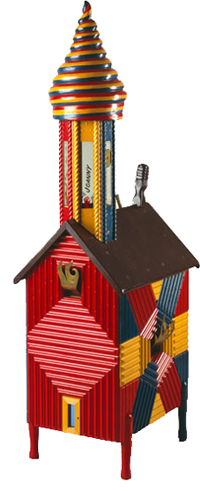| Sun | Mon | Tue | Wed | Thu | Fri | Sat |
|---|---|---|---|---|---|---|
| 1 | 2 | 3 | 4 | 5 | ||
| 6 | 7 | 8 | 9 | 10 | 11 | 12 |
| 13 | 14 | 15 | 16 | 17 | 18 | 19 |
| 20 | 21 | 22 | 23 | 24 | 25 | 26 |
| 27 | 28 | 29 | 30 | 31 |
CATEGORIES
RECENT ENTRIES
BLOG ROLL
Smart kids
 The big idea behind the University of Chicago’s model for urban elementary schooling is that every child should be engaged in ambitious, intellectual work. Students of all ages and in every school—public, charter, or private—should pose questions, scrutinize answers, and explore new ways of thinking. Last week, tagging along with third-graders from Beasley Academic Center on a tour of the Smart Museum of Art, I saw theory in action.
The big idea behind the University of Chicago’s model for urban elementary schooling is that every child should be engaged in ambitious, intellectual work. Students of all ages and in every school—public, charter, or private—should pose questions, scrutinize answers, and explore new ways of thinking. Last week, tagging along with third-graders from Beasley Academic Center on a tour of the Smart Museum of Art, I saw theory in action.
On this, their third visit to the museum through its Art in Focus program, 29 neatly uniformed boys and girls from the South Side public magnet school began with a review of earlier material. Constance and Caitlyn, Chicago student docents, asked and got quick answers to basic questions: What are the elements of art? What’s the difference between a three-dimensional and two-dimensional piece?
Moving into the Asia gallery, a small group contemplated some early Ming Dynasty sculpture. “What do you guys see?” asked Constance, pointing to a row of Buddhas. “What’s going on here?” Hands shot up. “It looks like they’re meditating,” said a boy.
Seated cross-legged on the floor, the kids defined and discussed—in that halting, quiet, third-grade way—the difference between representational and nonrepresentational art. They had questions of their own for Constance: Who made this art? When did they make it? How do we know? (Answer: read the label.)
Jumping ahead to Reg Butler’s Machine, a mysterious, modernist, cast-bronze sculpture, a girl wondered, “How come he made it like that?” “He just wanted to put something out there,” suggested a classmate. Constance told them the artist produced the piece just after World War II. That prompted more thinking. “I learned that they dropped a bomb in Japan,” a boy said, “so maybe he is trying to build a plane to get away.”
Last stop was a wood, glass, and tin sculpture called Burning House, featured in Your Pal, Cliff, the Smart’s exhibition of works by H. C. Westermann. What’s going on here? “I think someone set the house on fire to get payback,” said a boy. Why did they think Westermann gave his future bride the piece as a wedding present? “He’s burning in love with her,” smiled a girl.
The kids were excited to see a photo of Westermann’s studio and a reproduction of the wooden crate that Burning House was shipped in. The crate prompted more discussion: What’s the difference between fine and functional art? Can a crate be considered art? Does it belong in a museum? The group was divided.
After an hour in the galleries, the third-graders began to get fidgety, and so did I. Constance invited them to come back with their parents for an open house next week. Beasley Academic Center is a couple miles west of the Smart Museum—on South State Street and 52nd—but it’s not a world away. Something tells me these kids will be back.
RECOMMENDED LINKS
- Web site: Your Pal, Cliff: Selections from the H. C. Westermann Study Collection
- Web site: Smart Museum of Art
RELATED READING
- "Center Stage" (University of Chicago Magazine, Mar-Apr/09)
- "Artistic tourism" (UChiBLOGo, Apr. 12, 2009)
May 12, 2009
